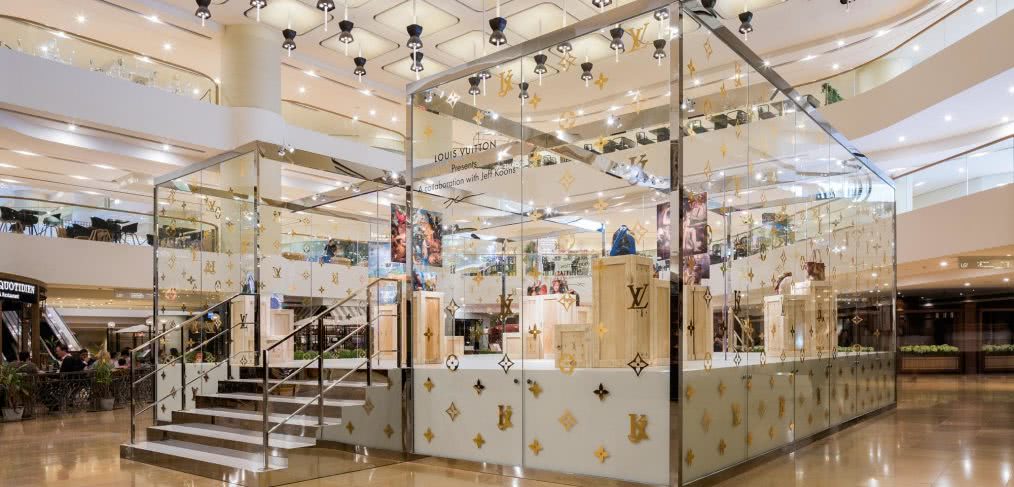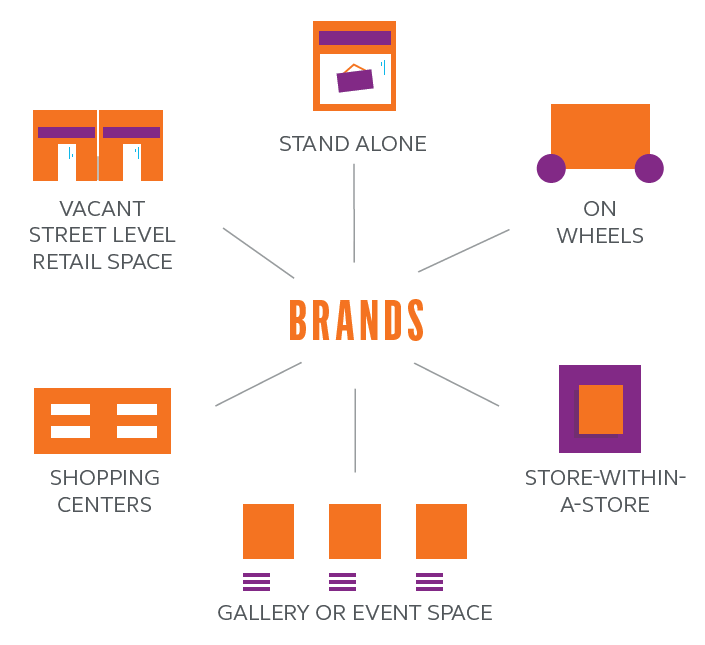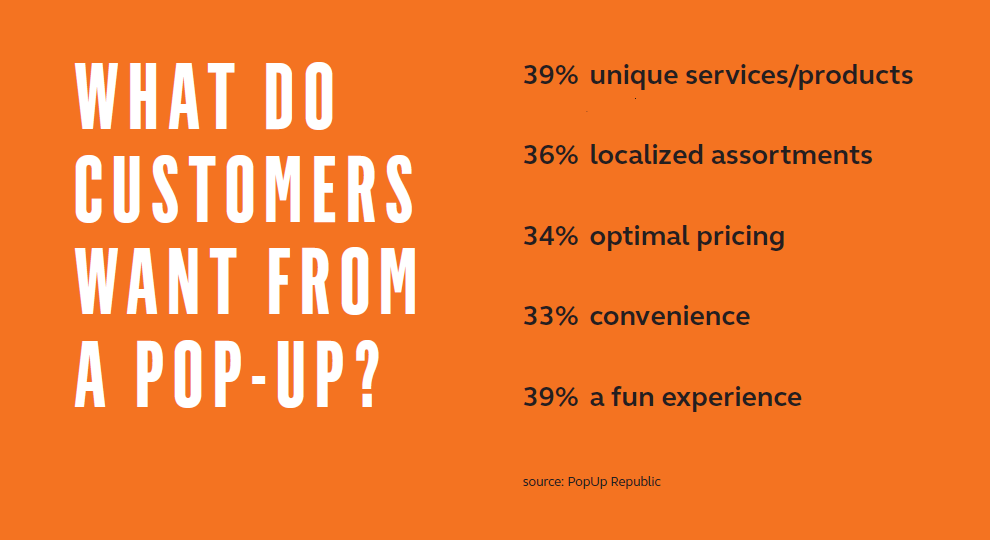
From Trend to Mainstay: The State of Pop-Up Retail
Everyone is familiar with the ubiquitous pop-up, but not many anticipated the lasting impact it has had on the retail industry. One thing is now for sure: pop-ups are NOT a trend; they’re a mainstay.
By definition, a pop-up is a shop, collection of shops or an event that opens in a temporary location and operates for a short period of time. The earliest “pop-ups” were simply seasonal offerings—holiday markets or farmers markets, for example. It wasn’t until 1997, when Patrick Courrielche pioneered a nightclub-meets-shopping-center in Los Angeles known as Ritual Expo that the term “pop-up” came to define an entirely new retail frontier. Soon, major companies and retailers were on board, and businesses specializing in pop-up operations cropped up everywhere.
Since then, the pop-up has undergone an evolution but retained its relevance. Why? The current and future retail landscape is shaped by shoppers seeking experiences, not just a transaction. These experiences create clear, lasting impressions about the brand that can pay off through other retail channels long after the temporary shop has been dismantled.
An Integral Part of the Retail Ecosystem
Today, the pop-up is a significant part of an integrated marketing strategy for emerging and established brands alike—a phenomenon that persists at the forefront of retail innovation thanks to its inherently experimental, flexible, low risk and temporal nature. It’s expensive to build a new retail store, after all, and some brands experience understandable uncertainty as to what the market can bear. Some are even taking the pop-up to the next level with the advent of the temp store, which looks as much like the permanent store as possible, but still operates as a one-off for the purposes of trying out new concepts.
Whether it’s testing or launching a new product, building brand awareness, educating consumers or generating buzz via Instagrammable visuals and partnerships with social influencers, pop-ups can deliver significant bang for the buck with the right design and the right strategy. And don’t forget, pop-ups are so named because they can pop up anywhere.

But They Can be Trendy
The great pop-up paradox is the coexistence of its incredible staying power with its ability to cater to a specific moment in time. Pop-ups are endowed with an ephemeral appeal; a catch-me-if-you-can, blink-and-you’ll-miss-it kind of attraction that capitalizes on the universal FOMO (fear of missing out) lodged in the brain of every avid experience-seeker. Pop-ups are a prime vehicle for showcasing what’s new and now—product offerings or upgrades, seasonal events or messaging—with minimal investment and commitment from the brand’s perspective. Particularly when paired with other events, such as art fairs, concerts or festivals, pop-ups can ride the coattails of a different draw and expand their customer base
They’re also quite effective at facilitating collaboration: many brands are expanding their client base by partnering with designers, artists and others who can help introduce their brand to a new audience (see Louis Vuitton + Jeff Koons, Gosha Rubchinskiy + Burberry, Nike + Off-White, Calvin Klein + the Andy Warhol Foundation…the list goes on). This newfound flexibility and freedom paves the way for experimentation in an entirely new retail world where imagination is the only limit.
Pop-Up Point of View
A few key things to keep in mind when planning for a pop-up:
Know your customer
Research demographics, lifestyle preferences, trends and the types of experiences and brands the customer desires. The offering should be unique, thoughtful, curated and dynamic.
 Define your pop-up point-of-view
Define your pop-up point-of-view
Differentiate yourself in the market by creating one or two memorable, unique experiences. Refine your brand-specific messaging and experience using high-touch, high-tech or high design, or a combo.
Keep it light—design for easy setup and for a minimum of red tape to install, maintain and re-deploy.
Test and learn—define your metrics for success and measure the performance of the program for future marketing. These are quick and relatively inexpensive stores that can teach you a lot about a market or customer base.
Keep it focused
Pop-ups aren’t meant to last or be everywhere all the time. Products can be exclusive to the venue and should always offer experiences that cannot be replicated online.
*Additional research provided by Helen Cho. Photo © Louis Vuitton
